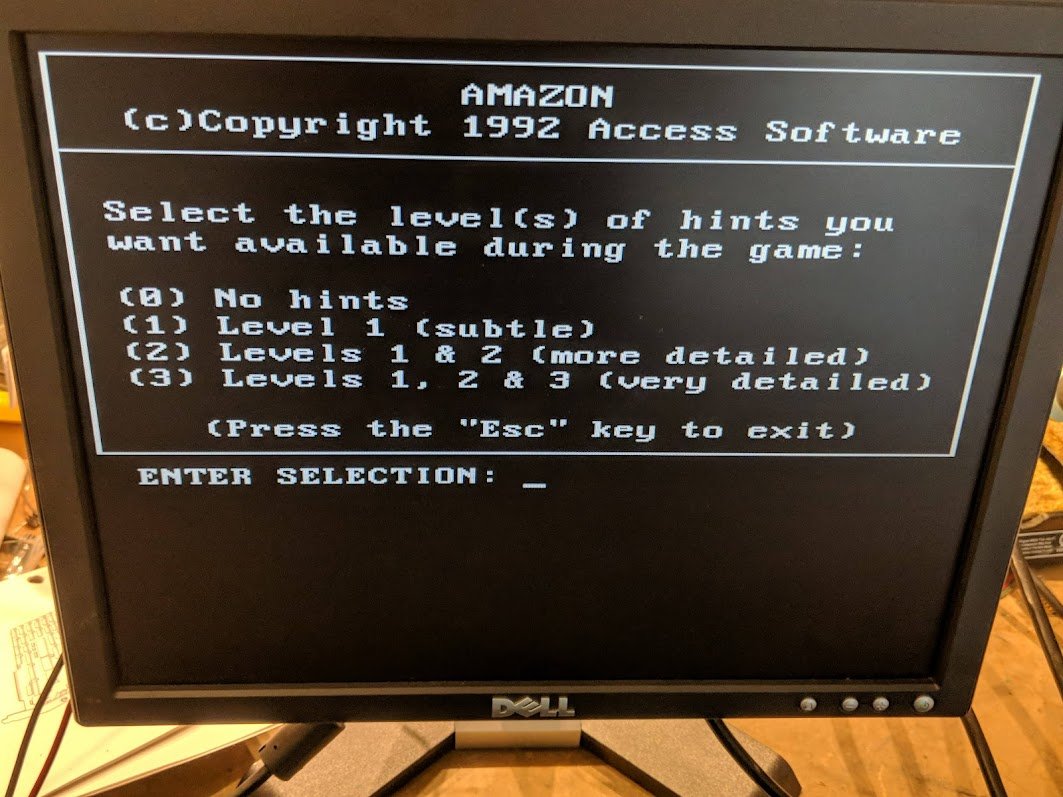
i want to run some software but there are only 4 (!) titles that support it. amazing. even the Ad Lib Gold had more supported titles. 

Amazon: Guardians of Eden looks interesting, let's try that one.
hmm, looks like it needs some sort of external power adapter. time to take it apart and find out what polarity and voltage it needs. 

sketched out a rough schematic of it. the 3.5mm jack has three (!) switches inside that seem to rewire how power is connected inside the device. looks like it can take power from pin 10 or from the external supply. 

let's take apart the mouse. this is an early 1980s optical mouse--bet you didn't know those existed!
it uses two LEDs--one red, one infrared. then two sensors.
it uses two LEDs--one red, one infrared. then two sensors.

the mouse pad is special. it's not plaid, these are two different sets of crossing lines. one is for the red LED's sensor and the other is for the infrared LED's sensor. 

inside the mouse is a microcontroller--a very early PIC microcontroller! it converts the pulses from the sensors into the serial data stream that goes into the PC. 

you can see the pattern as i move the mouse across the special mousepad. the sensor picks up on this.
anyway, for some reason only the horizontal axis works with this mouse. so i had to swap it out for this OTHER optical mouse i have. 

where was i?
but i have to have a separate speaker for the Snark Barker. hmmmmm, i know! i'll use the speaker that i modeled after the IBM one and 3D printed. they go well together. 

it sounds like "I JASON" but I think it's supposed to be "HI JASON". the music is coming out of a separate speaker as previously discussed.
here's Ad Lib digital sound. they don't let you use it for music simultaneously. presumably this uses the Ad Lib PCM hack
for reference, here's the Sound Blaster version.
one thing that doesn't come across in the video is that the Speech Adapter makes *constant* clicks and pops. they happen before and after each sample, and often during the sample playback as well. it might just be the game's implementation though.
it's not really a speech synthesizer. it receives audio compressed with the LPC-10 codec and decompresses it in real time. it's the exact technology used in the Speak & Spell. 

most of the blocks in the decompressor are just for decoding the data coming in. voice generation happens in the last two blocks, the signal generator and the LPC lattice network. 

the signal generator makes either a burst of white noise (unvoiced) or a buzzing sound at a variety of frequencies (voiced). this models the human vocal cords. 

every 25 milliseconds (a vocal frame) new data gets loaded in, and the sound of the generator changes.
the LPC lattice network is a special type of filter. it's a mathematical model of the human vocal tract and it represents it using a tube. and since the shape of the tube changes every 25ms, you might say that this chip models the human voice as a series of tubes. 

this particular LPC-10 codec is the granddaddy of the linear predictive codecs used by cellphones! you can hear it pretty readily during a phone call with a very poor connection. the weird noises are the filters responding to incomplete data (essentially)
oh yeah people are saying that my mouse looks like the mouse from a Sun workstation. that's because they're both made by the same company, Mouse Systems 🧀 



• • •
Missing some Tweet in this thread? You can try to
force a refresh





































